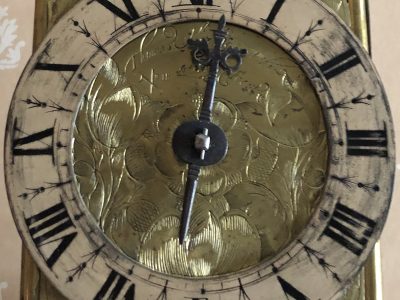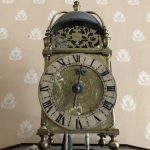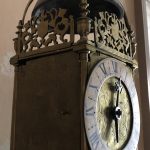Lantern Clock
An English brass lantern clock of c.1655. Originally called ‘House clocks’ or ‘great chamber clocks’, lantern clocks were renamed as such during the mid-nineteenth century. As their original name suggests, they were designed as simple, functional timepieces, used to regulate the daily routine and activities of the household in which they hung. Their weight-driven movements were stout, reliable, comparatively cheap and were more accurate than contemporary spring clocks, whose value lay in elaborate design, high quality decoration, and portability. Domestic inventories of the period show that lantern clocks were usually hung in a hall or on a staircase, where sufficient space existed beneath for the drop of their weights and where the sound of their bell or alarm could reverberate through the house.
The dial plate of the Society’s clock is engraved with tulip heads and acorns around a central rose – a design characteristic of the post-civil War generation of clockmakers- and is signed ‘Thomas Knifton at the X [crossed keys] in Lothbury Fecit’. A unique feature of the Society’s clock is that the dial plate is made from a re-purposed memorial brass of c.1610 and is deeply cut on the reverse side with a fragmentary inscription.


